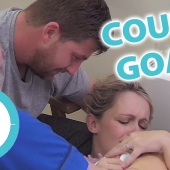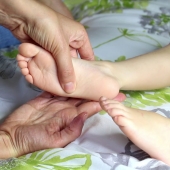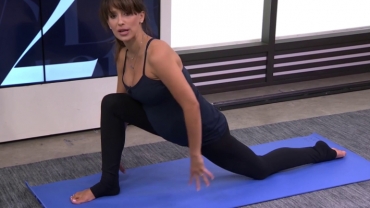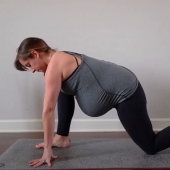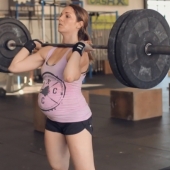As your baby grows, your body changes. Your growing belly and weight gain may put extra stress on your back. Good posture, good body mechanics, and exercise protect your joints from strain and prevent much of the discomfort, backache, and fatigue that comes from the changes in your body.
Changes that can occur while pregnant or postpartum:
- Increased Spinal Curves
- Tight Back Muscles
- Low Back Pain
- Tight Leg Muscles
- Ankles May Swell
- Head/Shoulders Move Forward
- Numb Fingers
- Pressure On Bladder
- Pelvic Ligaments Loosen
Gone are the days when pregnant women were told not to exercise. Stretching and strengthening prevent most of the typical problems that can occur during pregnancy. We encourage a combination of aerobic, flexibility, and strengthening exercises to stay healthy.
Safe aerobic exercises include:
- Walking
- Swimming
- Water Aerobics
All of these are safe throughout your pregnancy. Here are 10 easy exercises to help strengthen your muscles, promote flexibility, and help to reduce the discomforts of pregnancy.
Diaphragmatic Breathing: Breathing is important to help your body cope with the increased load of your baby. It improves your circulation and allows your heart and lungs to work better. You can do this exercise in any position. Place your hands over your lower ribs. Breathe in through your nose as if filling up a balloon with air in your belly. Exhale through your mouth and feel for your ribs to come down as if the balloon deflates.
Pelvic Floor Strengthening: Pelvic floor strengthening exercises, also called Kegel exercises, are important during your pregnancy because as the baby grows, your pelvic floor becomes weak and stretched. This can cause bladder control problems. You can do this exercise in any position. The easiest position is lying on your back or on your side. As you exhale, tighten the muscles around your vagina as if you would slow the flow of urine or prevent yourself from passing gas. Hold for five to 10 seconds and relax. Repeat 10 times.
Abdominal Bracing: Abdominal bracing is an important exercise that strengthens the abdominal muscles that support your back and expanding belly. You can do this exercise in any position. The easiest position is lying on your back, but you can also do this on your hands and knees. Place your hands over your lower abdominals. Tighten your lower abdominal muscles. The muscles under your hands should feel firm. If you can't find the muscle, laugh out loud or say the word "hiss." Hold for five seconds and relax. Repeat this 10 times.
Pelvic Tilt: The pelvic tilt helps to stretch your lower back and strengthens the abdominals that support your back and expanding belly. This is sometimes call the cat and camel exercise when you are on your hands and knees. You can do this exercise in any position. Flatten your back against the floor or on the bed as if you are bringing your waist to the floor or bed. If you are having a hard time, you can contract your buttock and belly muscles, and you should feel your back flatten. Hold for five seconds and relax. Repeat 10 times.
Single Knee to Chest: The single knee to chest or low back stretch exercise stretches your lower back and buttock muscles. Lying on your back or on your side, bring one knee towards your chest. You should feel a stretch in your buttock or lower back. If you can't reach behind your knee, use a towel hooked behind your knee to assist. Hold for 30 seconds. Repeat three times on each leg.
Rock Back: The rock back, or backwards stretch helps to stretch your lower back and buttock muscles. This exercise is done on hands and knees, but if you have knee pain, do this exercise in standing. Keep your arms straight, but don't lock your elbows. Slowly push back, bringing your buttocks toward your heels and try to let your chest drop towards the floor or bed. Hold for 30 seconds, and repeat three times.
Hamstring Stretch: The hamstring stretch makes it easier to get up from chairs and improves flexibility in your legs. You can do this exercise while sitting on the floor or bed. Keep one leg straight and the other leg bent, or put both legs straight in front of you. As you exhale, lean forward from your hips and try to touch your toes. Try to keep your back straight and chest up while reaching for your toes. You should feel a stretch in the back of the legs. Hold for 30 seconds. Repeat three times on each side.
Upper Chest Stretch: The upper chest stretch helps maintain upper body posture, stretches out tight chest muscles from your expanding breasts, and strengthens your upper back. You can do this exercise while sitting or standing. Stand up tall, no slouching, and tuck in your chin. Stand with your arms at your side with your elbows bent. Extend your elbows while pulling your shoulders back. You palms should face forward and you should spread your fingers apart. Hold for five seconds. Repeat 10 times.
Squats: Squats strengthen your leg muscles and protect your back to make it easier to get up out of a chair. This exercise also helps you to lift with proper body mechanics. Stand with your back against a wall, and bring your feet forwards about 12 inches. Slowly slide down the wall to a comfortable position and hold 10 seconds. Slowly use your legs to slide back up. Don't lift your back or buttock off the wall. Repeat five times.
Calf Stretch: Calf stretches help to prevent cramps in your calf muscles and improve flexibility in your lower leg. Place your hands on a wall, bring one leg back, and keep one leg forward. The leg in the back should be straight. Bend your front knee and bring your hips forward toward the wall. You should feel a stretch in the back leg. Hold for 30 seconds. Repeat three times on each side.
- 2332 views

